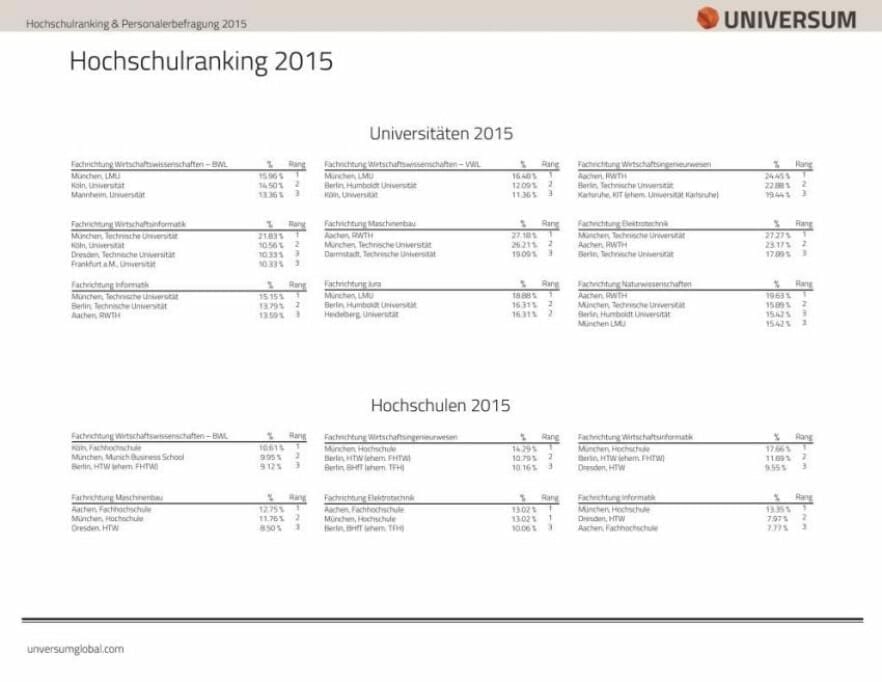Your shopping cart is currently empty!
For their successful, good life Information you really need: Government-funded publisher, awarded the Global Business Award as Publisher of the Year: Books, Magazine, eCourses, data-driven AI-Services. Print and online publications as well as the latest technology go hand in hand - with over 20 years of experience, partners like this Federal Ministry of Education, customers like Samsung, DELL, Telekom or universities. behind it Simone Janson, German Top 10 blogger, referenced in ARD, FAZ, ZEIT, WELT, Wikipedia.
Disclosure & Copyright: Images created as part of a free collaboration with Shutterstock.
Techniques & social learning for cooperative work & autodidactic learning: 3 success factors for digital teams
From Dr. Anja C. Wagner (More) • Last updated on October 05.10.2022, XNUMX • First published on 22.07.2015/XNUMX/XNUMX • So far 5397 readers, 3415 social media shares Likes & Reviews (5 / 5) • Read & write comments
Digital collaboration is made up of three key factors, all of which must be shared equally with those involved, so that work can be done in the digital world Team successfully can be.

- Factor 1: Confidence culture
- Factor 2: Mindset without competition and hierarchies
- Factor 3: The optimal working environment
- Social Learning and Autodidactic Learning for All: Away with the Educational Institutions?
- We learn only 10 percent through institutionalized education
- A certificate demonstrates what you have on it?
- Just start
- Autodidactics: High learning curve
- Social learning for all
Factor 1: Confidence culture
A trusting culture of sharing and respect for the experiences of others. Here come all these terms like eye level, Esteem, collective Intelligence etc. come into play. Do you have a clear set of rules and a common one? Objective, great things can arise that are more than just the addition of individual contributions.
You bring in different chains of associations during the collaboration and follow different thought extracts that arise just-in-time. Ideally, at the end of the day, you can no longer identify who made the Idea came from. It should be a joint effort in this form unique .
Factor 2: Mindset without competition and hierarchies
A personal mindset that, for the moment of collaboration, eliminates any competitive and hierarchical situation and is able to communicate with others on the same level.
In this context, keywords like
- Openness,
- self-determined work (and learning),
- Authenticity,
- Empathy,
- Resilienzfähigkeit
- and network competence
comes into play as central individual fields of competence. Continuous digitization also enables a more efficient, also more mobile workflow, which ultimately is a more balanced one Work-Life-Balance benefits.
Factor 3: The optimal working environment
A work environment that supports this type of work in transformative work. There are a variety of tools in various fields. For example, we regularly use ether pads in parallel to video conferences. There, several people can write in a “document” in real time. Alternatively, depending on the application scenario, we also use the Google Office package, where you can also work together on texts, presentations, Excel sheets - in real time or with a time delay.
This not only saves time because you don't have to wait for others to process it or don't know exactly which version is the latest. This form of cooperation also promotes the collective creativity (see above). Keywords such as transparency, efficiency and effectiveness apply in this context. Another variant that we use in time-sensitive projects is the shared use of Trello as a project management environment.
Here you can Tasks, deadlines and responsibilities dynamically define, comment and work through together. Combined with Slack as eMailReplacement and, if necessary, Evernote, in order to digitalize personal thoughts or transcripts and exchange them with colleagues when needed, various digital workflows are conceivable here which make the work much more fun and efficient at the same time.
It has been known for years: Most people learn by doing. "Learning-by-doing" or "learning-on-the-job" accounts for about 70 percent of personal learning. Why do we still stick to the institutionalized Education firmly?
We learn only 10 percent through institutionalized education
So 70 percent of learning is done by doing, another 20 percent is acquired by teaching others People asked directly what they would do if they were there. And only 10 percent of all know-how is acquired in formal settings, i.e. at school, University, Professional school, Further Training etc.
At the same time, everyone discusses almost exclusively the 10 percent in the subject of education. You are inventing all sorts of new words for it, in order to develop new formats, which allow the 10% to be a more important dimension. Meanwhile, it does not change the formula 70: 20: 10.
A certificate demonstrates what you have on it?
However, it is unfortunately the case that a normal person, who has been socialized in the formal education system, thinks that the actual education takes place only in the classroom. And only one certificate can demonstrate what you have on it.
But because this acquisition is usually not fun, you push the next one Further Training further and further out. What is learned there often has little relation to one's own working or living environment.
Just start
But how do the professionals, who change from one job to the next without ever having worked out a certificate in this area?
The answer: You just started working in the area. As simple as that.
Starting yourself motivated, you start researching the net and somehow ask your way through. Either in self-talk or in forums or in communities or in an increasingly personal way Network Gather the know-how you need to move forward step-by-step.
Autodidactics: High learning curve
The learning curve is immense here, if one is always faced with a next challenge, which requires a little more skills than one already brings. In this way one gets into personal flow and develops further. And if a small course or a compact offer beckons at the edge of the path, which brings a justament closer to the next step at the moment, then you take it with you. Not for the sake of the certificate, but for the sake of the flow.
Especially in times of change Working world, which is undisputedly ahead of all of us: Looking here in your own environment to see how you could develop personally can often be a quicker career step than waiting until a new training program is properly accredited. The formal routines are so slow: One can almost assume that the development in the course of the bureaucratic processes has progressed further since the offer was conceived.
But how do you document your personal learning curve without "official" certification? How can one Companys assess to what extent Employeeshave further qualified in a self-motivated manner?
By simply documenting his work continuously. By blog, XING, LinkedIn, Google+, Twitter, Slideshare etc., you can not only reflect your work, but also network with peers.
So you automatically slip into social learning mode - and that's the best anyway. Those who then keep their profiles on the professional networks clean and connect them to the social services may hardly need themselves in the future apply. The companies then approach you by themselves. You are looking for qualified personnel there.
Here writes for you
 Dr. Anja C. Wagner is the initiator and managing director of ununi.TV. Dr. rer. pole. Anja C. Wagner deals with global transformation in digital transformation. She is considered a creative trendsetter and describes herself as a Bildungsquerulantin. In terms of content she deals with user experience, education policy, work organization and our future in a networked society. She now offers studies, lectures, consulting and various online projects with the company FrolleinFlow GbR. The Crowd University ununi.TV is one of these online projects. All texts from Dr. Anja C. Wagner.
Dr. Anja C. Wagner is the initiator and managing director of ununi.TV. Dr. rer. pole. Anja C. Wagner deals with global transformation in digital transformation. She is considered a creative trendsetter and describes herself as a Bildungsquerulantin. In terms of content she deals with user experience, education policy, work organization and our future in a networked society. She now offers studies, lectures, consulting and various online projects with the company FrolleinFlow GbR. The Crowd University ununi.TV is one of these online projects. All texts from Dr. Anja C. Wagner.
25 Answers to "Techniques & Social Learning for cooperative work & autodidactic learning: 3 success factors for digital teams"
-
How do employees really learn? What is the significance of classic training? From @Berufebilder - Exciting contributiong6f2DfIIxj
-
RT @EducationGear: Social learning & autodidactic learning for everyone: Away with the educational ... - Berufebilder.de (Blog): Social… http: /…
-
70-20-10: @ acwagner for informal learning: - Exciting contributionyGBfCtjiH0 calls for a counterstatement of the institutions?!? ;-)
-
@Acwagner is trying here to abolish the universities and replace everything with social learning? Am I superfluous? Working together is based on 3 Factors # Trust #Mindset and #Tools for that you need digitization.
-
Social learning & autodidactic learning for everyone: Away with the educational institutions? | BER ... - Exciting contributionuBssJ2pE7v
-
Social learning & autodidactic learning for everyone: Away with the educational institutions? - Exciting contribution1TP5MSe6AP
-
SOCIAL LEARNING & AUTODIDACTIC LEARNING FOR EVERYONE:
Way with the educational institutions?
- Exciting contribution0ApBNPBR61 -
RT @jrobes: in a nutshell: “Social learning & autodidactic learning for everyone: Away with the educational institutions?” (Anja Wagner) http: //t.…
-
RT @acwagner: I just talked about DIY learning & why certificates are no longer needed -> - Exciting contributionLzWTwV5riB
-
RT @jrobes: in a nutshell: “Social learning & autodidactic learning for everyone: Away with the educational institutions?” (Anja Wagner) http: //t.…
-
RT @acwagner: I just talked about DIY learning & why certificates are no longer needed -> - Exciting contributionLzWTwV5riB
-
I so briefly about DIY learning & why certificates are no longer needed -> - Exciting contributionLzWTwV5riB
-
in a nutshell: "Social learning & autodidactic learning for everyone: Away with the educational institutions?" (Anja Wagner) - Exciting contributionIMTbs3MWVp
-
RT @WolfgangKaiser: RT @jobcollege Social Learning & Autodidactic #Learning for Everyone: Away with the educational institutions? - Exciting contributionrsc ...
-
RT @jobcollege Social Learning & Autodidactic #Learning for Everyone: Away with the educational institutions? - Exciting contributionrsc8dvEr9D #Prof
-
What kind of education do we really need? - Exciting contributionaP3ygOSTYg #Future #Autodidact #Wissen #Learning
-
Social learning & autodidactic learning for everyone: Away with the educational ... - Berufebilder.de (Blog): Social ... - Exciting contributionAaePLg4kMe
-
Social learning & autodidactic learning for everyone: Away with the educational institutions ?: For years it has been known ... - Exciting contributionqPScxyZxWB
-
Humans are animals of experience. We should all trust ourselves to do more experiments - especially when it comes to finding the right job for us.
-
Nice comment, thank you.
-
Thanks for the article! Just read an article about it. Here in the blog is also often written about the distributed teams and the trust working time, very interesting as they complement each other :-)
-
Thank you very much for the comment!
-
-
-
Good article. Thank you too!
-
-
Social learning & autodidactic learning for everyone: Away with the educational institutions? via BERUFEBILDER - Exciting contributionGzGSE6EtD8
-
RT @jobcollege: Social learning & autodidactic learning for everyone: Away with the educational institutions ?: Since ... - Exciting contributiont2kMjPQRfm # B ...








Post a Comment